Planting Carrots in Containers with Homemade Potting Soil Recipe
02. April 2018
As some of you may or may not know, my garden spot is rather small. Minuscule, even. I cram an awful lot in there and push the ol’ boy to his limits. So this year, since space is at a premium, I decided to give container gardening a go. Also, I wanted to try out an array of new carrot varieties. Read the tutorial below & download & print my Carrot Planting Tip Sheet.
The first step is to find a receptacle for your garden to grow in. For carrots, you really only need it to be about one to one-and-a-half feet deep. I found a Christmas tree storage container that is going to be perfect for growing carrots. My husband even decorated it with some fun carrot doodles (more on that later). It is large enough to accommodate the quantity I plan on growing, but is still small enough to be mobile, if necessary. I drilled more than a dozen 1/4” holes on the bottom for proper drainage. I then placed newspaper inside on the bottom of the container before filling with soil. This will make sure that it doesn’t create a muddy mess all over my porch.
You need a loose and light soil mix for carrots to flourish. A soil that isn’t compacted will allow your carrots to grow longer. I am using a near equal combination of sphagnum peat moss, perlite, and compost. There are other alternatives you can try as well, which I'll list later. Why make your own soil instead of buying a convenient bagged mix? The cost is much less to make your own. PLUS, there's the added benefit of knowing exactly what's in it. So you can tailor your mix for specific foods that you grow.
Below are the 3 main components to my DIY carrot soil mix. Combine these in equal amounts to create the perfect soil to grow great carrots.
Sphagnum Peat Moss
Peat moss is sought after because of its ability to retain several times its weight in moisture. It releases moisture to plant roots as needed. Peat moss is widely available to buy and is inexpensive. Coco coir (the fibrous material around the shell of a coconut) is also a very good option in place of peat moss.
Perlite or Vermiculite
Perlite is a volcanic glass/ash that's used to aerate the soil and keep it well draining. It can hold 3-4 times it's weight in water without becoming soggy. It's sterile and pH-neutral and doesn't break down easily. Vermiculite is a mineral that's expanded in a furnace, making it lightweight. It adds aeration to soil and retains nutrients. It must, however, be handled gently. If handled roughly, it will compact and lose the ability to hold air. Vermiculite holds water, contains calcium and magnesium, and is almost pH-neutral. I opted to go with perlite for my container instead of vermiculite due to cost. Perlite is much less expensive.
Compost, aka "Black Gold"
Compost adds lots of nutrients to the mix. In fact, it's one of the best fertilizers around. Compost is a good source of nitrogen, phosphorous, and potassium. The nutrients in compost are slowly released. The micronutrients in compost are essential for plant growth. Compost retains moisture, and improves the chemical, physical, and biological quality of soil. Overall, compost creates a better environment for plant roots. My compost needed sifted since it was a little chunky in it’s current state. There were avocado pits and bits that hadn't broken down yet. It needed to be much finer in texture to accommodate carrots. After all, I was after long carrots. So I wanted to avoid any obstacles in the soil that may impeded their growth.
Alternative & Eco-Friendly Soil Mixes
Peat moss, perlite, and vermiculite contribute to pollution when mined, processed, and packaged. There are several alternative and more eco-friendly potting soil ingredients you can try. Peat moss comes from wetland bogs which help sequester carbon. It grows slow, so increased demand may encourage over harvesting. So conservation of peat bogs is as important as protecting the rainforests. Composted tree bark, wood chips, and rotted leaves are good substitutes. And since we're surrounded by trees, most of those ingredients are free!
Alfalfa may be another good option to replace peat moss. It's rich in nitrogen which is slowly released into soil.
Coarse sand (bulider's sand) can replace perlite, a mined ore, to lighten soil and improve drainage. A little sand goes a long way. Adding too much will make the soil heavy. Avoid fine sands which end up making soil dense and heavy too.
Vermiculite naturally contains a small amount of asbestos. Inhaling asbestos fibers is dangerous as they are carcinogenic. You should wear a mask and only use vermiculite in ventilated areas. Wetting it helps the dust from spreading. Pine fines, finely ground pine bark, are a good alternative to vermiculite. Coco coir, ground coconut husk, is also a good replacement. Depending on your location, it may be an exotic ingredient as it comes from India or Central America. Coco coir can hold up to nine times its weight in water and also help aerate the soil.
Many gardeners use their best garden soil amended with compost or composted manure. Clean, commercial top soil would be okay to use as long as it's untreated. I toss old potting soil from houseplants into my compost too. Soil doesn't go BAD, it just becomes lacking in nutrients. So organic matter needs added back into soil over time.
Newspaper is often used in the garden as a natural mulch and weed suppressant. Some gardeners even make potting cups from folded newspapers. Ground up newspaper helps retain moisture and adds organic matter to soil. There has been debate amongst organic gardeners on the safety of using newspaper in soil. Most newspapers use soy inks and bleach paper using hydrogen peroxide instead of chlorine bleach.
Alternative Fertilizers
If your soil mix is lacking in compost, you may consider an organic fertilizer. The fertilizer choice would depend on the base growing mix. And since many fertilizers affect the pH, choose appropriately! Blood meal adds nitrogen and bone meal adds phosphorus. Kelp meal, greensand, or other minerals add minor nutrients. I often hear great things about bat guano, although I've never used it. I have used wood ash in my garden before because my mom claims it's the best. Mom is NEVER wrong. Composted manure is often a fan favorite for gardeners. The pièce de résistance (in my particular case, at least), is my manure fertilizer. That’s because it is “Grade A, 100% Marion Township, Grey Donkey Dung” (a direct quote from my father-in-law). This manure is as near a perfect example of nature’s fertilizer that you are likely to find on God’s green earth. Add organic fertilizers in small amounts or if your plants aren't growing how you want them to.
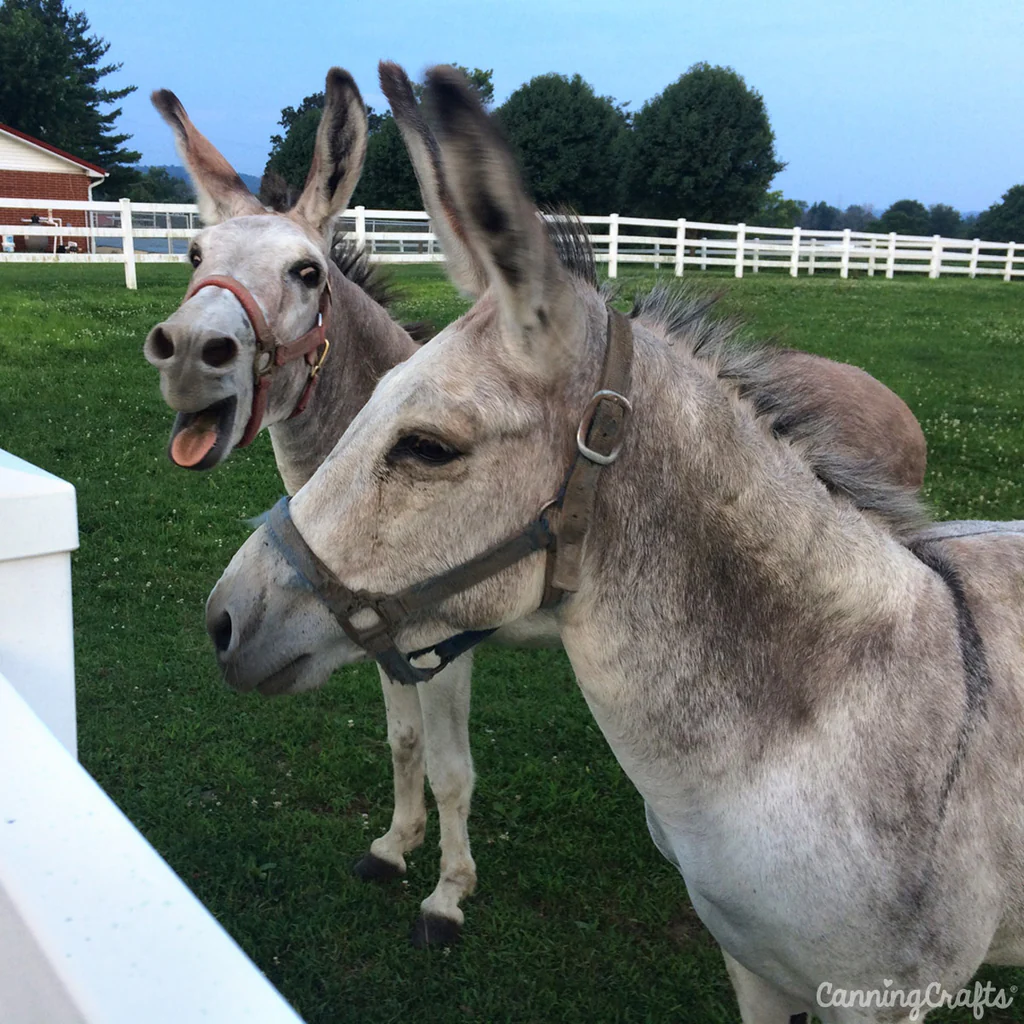
This is Norman and Lady. Their poop is in my garden. And the world's greatest father-in-law drove that poop four hours round trip to my house. And Norman thinks that's hilarious...
Planting Carrots
Planting carrot seeds is as easy as sprinkling the seeds along the surface. They shouldn’t be that far apart from one another, and can even be planted in clusters of three, if you prefer. The seeds should not be planted deep at all, so spread a rather thin layer of your soil mixture overtop, or do not cover at all. Carrots need a very moist soil to germinate in. This can prove problematic since the top layer of soil will dry out quickly due to evaporation. Some find it easier to pre-water the ground before dropping the seeds. Then watering again after the covering the seeds with soil. During germination, I like to keep the plastic top on my container to help retain moisture and keep it a little warmer too. Remember to keep an eye on your carrots in these early days, so the ground never goes too dry or becomes a swamp.
If you want to plant carrots faster and easier, look into Pelleted Carrot Seeds. This photo below shows pelleted seed versus regular carrot seeds. Pelleted seeds have a white coating around them which makes tiny seeds easier to see and handle. Yeah, I’m looking at you, carrot seeds! When I plant pelleted carrot seed, I place the seeds evenly spaced 1.5" apart on the soil surface. Then I push the seed down into the soil with my finger about 1/4" deep. Pelleted seeds also work well in mechanical planters because they are less likely to jam. With regular carrot seed, you would sprinkle seed onto the soil and barely cover or not cover at all. If spaced properly, you do not usually need to thin seedlings from pelleted seed. SO again, this is a big time saver in the long run.
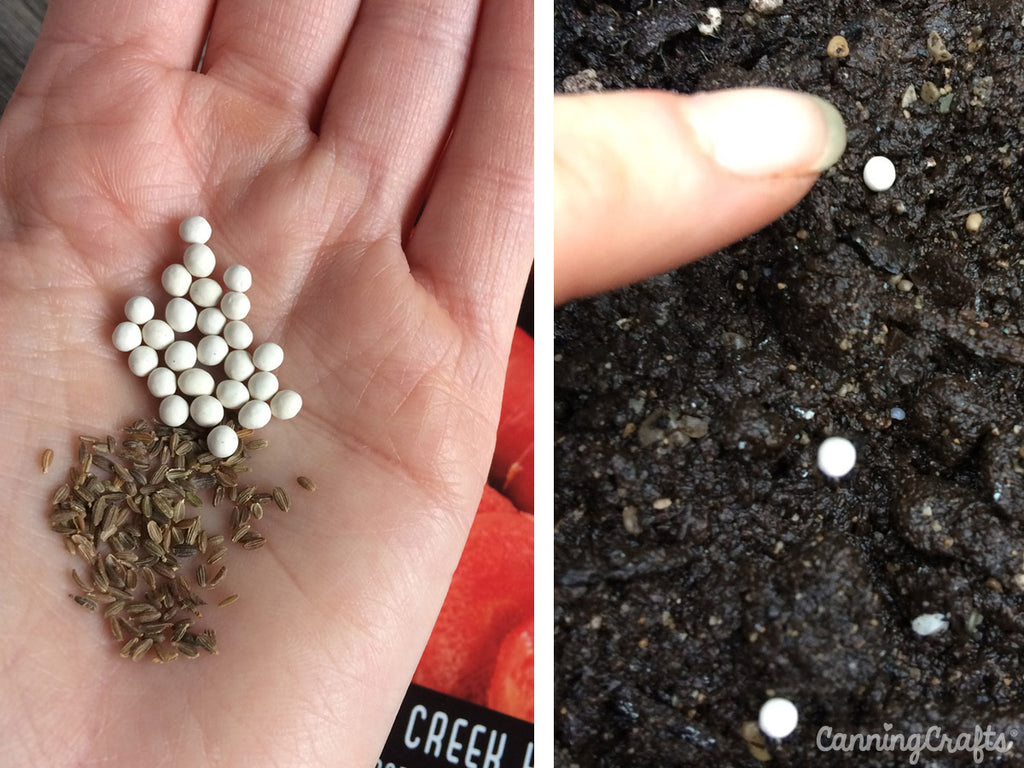
According to seed distributors, pelleted seed has a shortened seed shelf life. So it’s recommended to use the pelleted seeds in the first growing year. However, I once had leftover pelleted seed, so I planted them the following year as a test. I planted them a little closer together in case the germination was low. I was surprised to see that I had at least an 85% germination rate though. WOOT!
You can buy pelleted seeds for lettuce, carrots, flowers, and more. I've found that Johnny's Selected Seeds has the largest selection of pelleted carrot seeds.
Once the seeds germinate and have spouted to a couple inches high, you will need to thin them out. If you planted pelleted seed, you may not need to thin them out, lucky you! Each remaining carrot should be about an inch apart. The thinning process is very important! Overcrowded carrots won't get the nutrients, moisture, and space needed to thrive. You may need to mound up soil around your carrots that remain, so the roots aren’t exposed.
If you want your carrots to do really well, you may want to thin them a second time after another month. This time try to get them an inch and a half to two inches apart. These little carrots should be substantial enough for you to eat. If careful, you can try transplanting thinned carrots to areas with low germination. Try to get them into the ground as upright as possible—I know, that’s tricky! Remember to cover over the roots so they avoid exposure to sunlight. Once the carrots are about three inches tall, I'll add more compost fertilizer around them.
Crazy Carrot Container
Oh yes, before I wrap this up I should mention my husband’s vandalization of the carrot container. I asked for something classy and stylish… and instead I got this! Just kidding! I think this is super cute and love that the soil comes through behind the cartoons. He used acrylic paint markers that will hopefully hold up to the elements. We shall see.
YES. There will inevitably be a squirrel digging in my container.
And swallowtail caterpillars are big fans of carrot tops.
Sometimes I get funky carrots with multiple limbs. I'm hopeful that planting in a container this year will eliminate crazy carrots!
Carrot Deformities & Growing Issues
A proper soil mix free of rocks and debris will ensure long straight carrots. But there are other carrot growing issues that may come up. Splitting happens if there's inadequate moisture or fluctuations in moisture. Carrots need just the right amount of water, about an inch a week during the growing season. The soil should be moist but not waterlogged. Roots will rot if there's too much moisture. If you neglect to water carrots, compensating by overwatering will lead to cracks. Moisture stress causes stunted growth as well. Too much nitrogen can also cause cracking and multiple roots to form.
Overcrowding can cause deformities such as forking and splitting in carrots. Plant and thin according to the seed packet guidelines. Use a loose soil and remove weeds to allow carrots to grow straight. Mulching around carrots will help suppress weeds.
Deformed and cracked carrots are usually still safe to eat. You can cut off damaged portions if they don't look right. I often add deformed carrots to my
chicken bone broth.
Of course if you don't want to eat your deformed carrots, you can always PLAY with them!
Aster yellows disease also causes deformities including secondary roots. This disease is caused by a mycoplasma organism carried to plants by the aster or six-spotted leafhopper. While the disease affects many other plants, carrots are often the most affected. The first symptom is yellowing leaves, then plants are stunted. Taproots become very hairy, pale in color, and bitter tasting. Affected carrots are may be inedible because of the taste.
My Carrot Container Results
I'm happy to report my carrot crate experiment was mostly a success last year.
Read and see the results of my carrot crop. If I ever make another container, I would change a few things. One, I don't think I would add sand to a container this large. It became too heavy for me to move on my own. The peat moss mix would've been much lighter without the sand. Two, the drainage holes on the bottom weren't sufficient. We had heavy rains which caused my container to get waterlogged briefly. I believe the layer of newspaper slowed the drainage too much. I drilled a few more holes along the front bottom of the container to release the water.
Additional Reading
ATTRA Sustainable Agriculture has a handy PDF download on
organic potting soil mixes. They have tips on making your own potting soil mix with additional info on fertilizers.

Do you plant your carrots in raised beds or containers? Do you have any growing tips or favorite soil mixes?

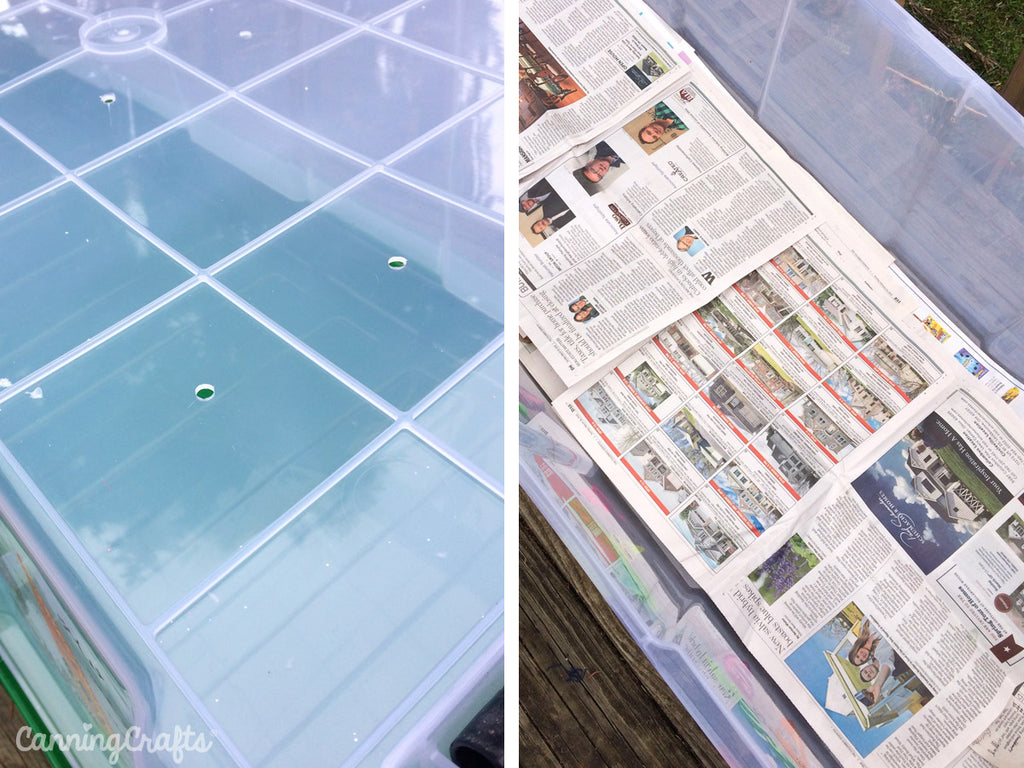

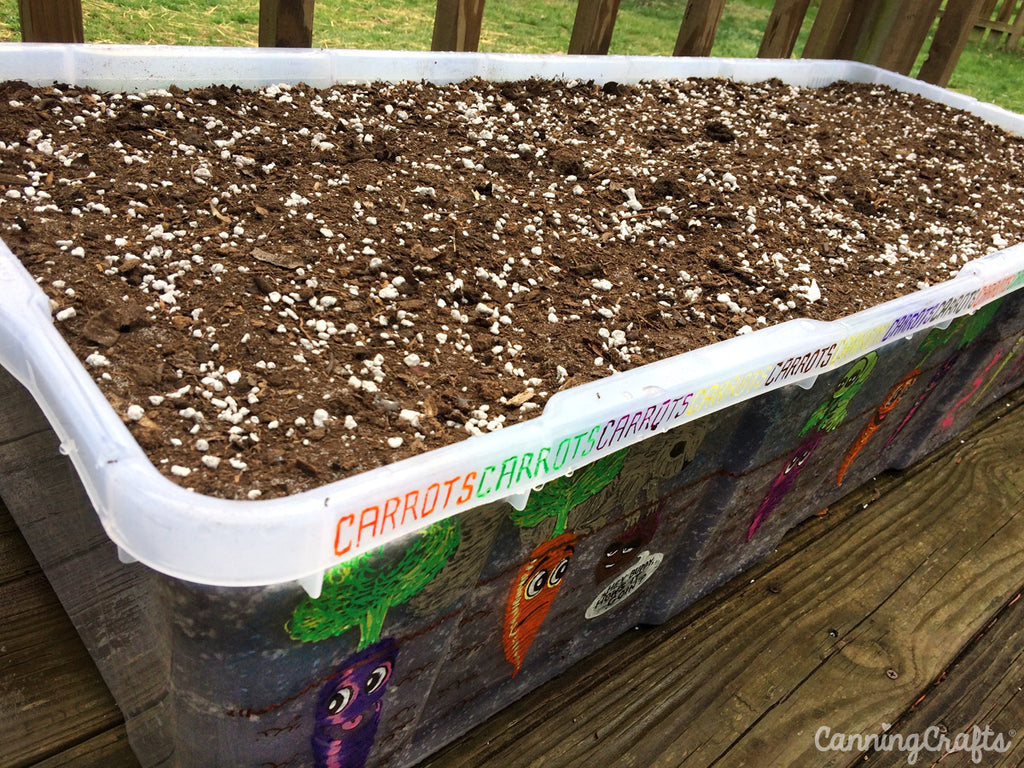



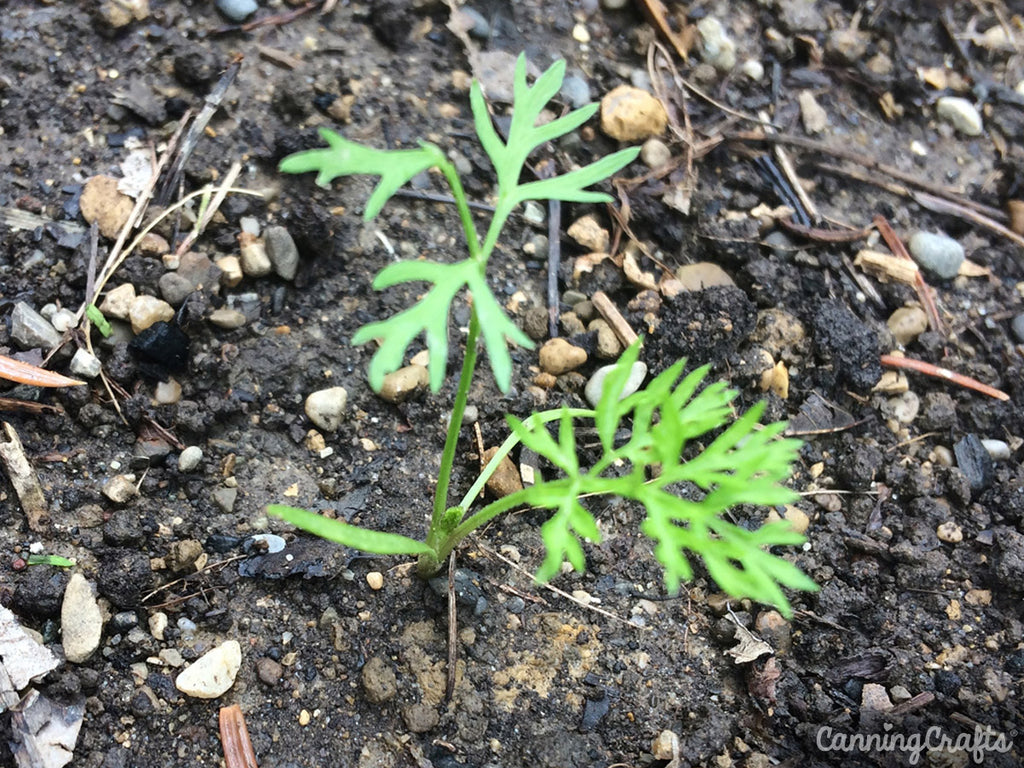
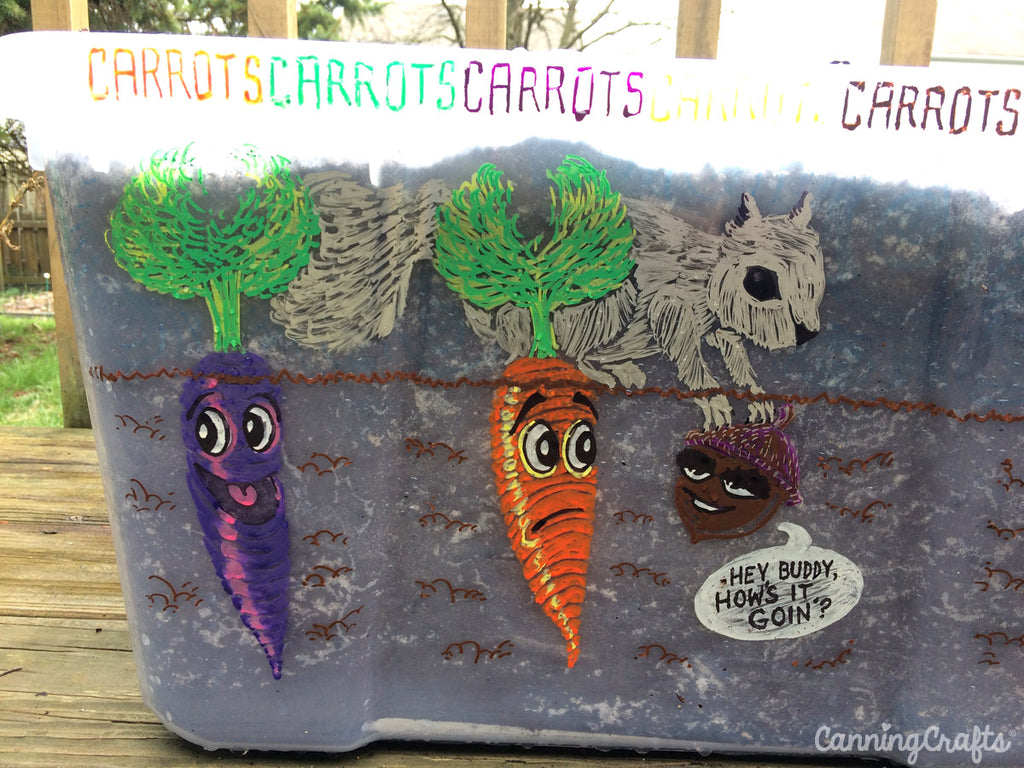

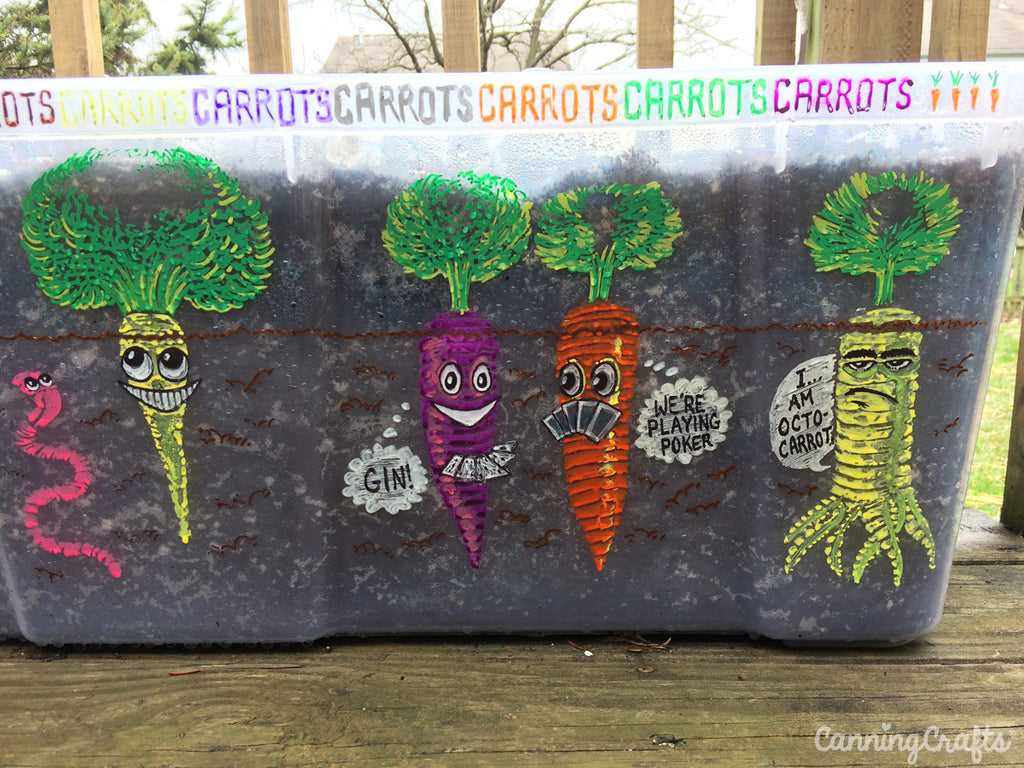
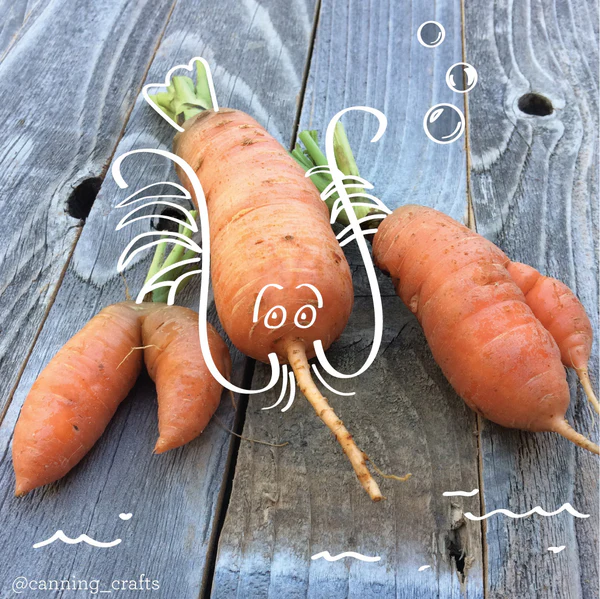





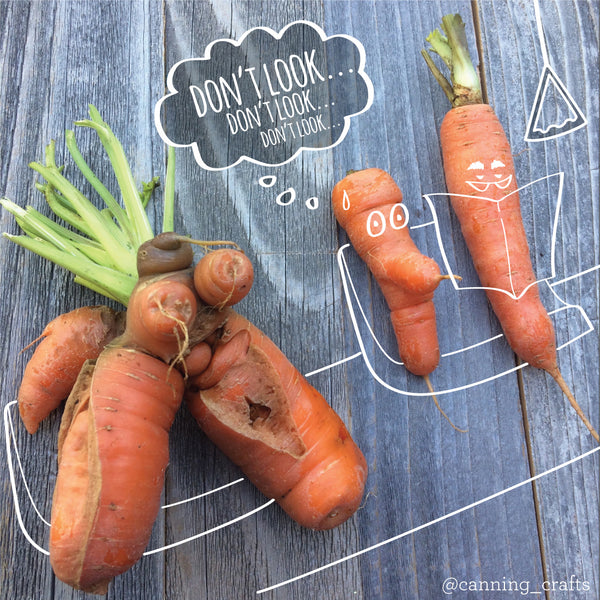








Comments (20)
I love this idea! We are trying the baby carrots this year I think they are called small sweet carrots.
hi i have carrots growing in a container,36 inches long by 16 deep when do i pick them in the fall
Barb,
I usually harvest my fall carrots in November, but your harvest date may depend on your zone and weather. I usually look at the top of the carrot to see how big it looks, then pull a few up to check the size before doing a full harvest. Some gardeners keep carrots “stored” in the ground & covered, then harvest into the winter as well.
Good luck!
Alison
This is the most common sense guide, so full of good information and fun ideas.. I can’t wait to get started.. Thank you so very much..
The pictures alone made this article totally worth the read
Your husband’s artwork is adorable! I definitely would like to do some on my containers as well. I’m attempting rainbow carrots. 😁👍🥕🥕
hello how deep is the container you are using? thanks
Cindy,
My container is about 18" deep. You can use containers that are less deep than that if you plant shorter varieties of carrots.
Alison
CanningCrafts
This will be my first year in planting my veggies in plastic tubs. I thank you for your experiences with carrots, as that is a major one I plan on planting! Your article was particularly helpful! I also plan on growing some beets. Any advice on beets? Then some cabbage among other things! I want to grow enough to can for one person! Thanks again.
Hi Lana!
I hope you are successful with container gardening. Carrots do much better in containers in my experience.
I have also successfully grown beets in containers. I am not the most hands-on gardener… I like to plant stuff & not worry about things too much. I’ve found that beets have done pretty well for me without having to fuss much with them. I add lots of compost to the soil before planting. One year I had leafminers on the beet leaves & those were a bit gross. So I tried my best to remove the eggs before the larvae went crazy. The beets weren’t affected, just the greens were (which I also eat). Row covers would help if you have bug issues. I have never grown cabbage, but I will try that one year I’m sure. Good luck with your garden :)!
Alison
CanningCrafts
I’m excited to grow carrots in containers this year. Thank you for sharing your experience. It’s important to pay attention to the numbers on the bottom of plastic containers. Only use #1, #2, #4, or #5. Others can leach hormone disrupters which give false “signals” throughout your body. In the past I have purchased Fire House Subs pickle buckets for a couple of dollars, but make sure you clean out the vinegar residue.
Thanks for these carrot growing tips-looking forward to your newsletters.
Just found your wonderful site & article about container growing carrots…because of more control over my natural soil…Thank you so very much…I’m going to try beets as well m, so I’m looking forward to it..😉
What ratio do you mix the soils of peat moss, black gold and perlite?
Billy,
I used a near equal combination of sphagnum peat moss, perlite, and compost. You can adjust the ratios though & even add other items instead, such as dried leaves or coir.
Alison
CanningCrafts
I’m really anxious to give this a try for carrots and beets. I seem to never get all the rocks out. My carrots, beets and rutabaga have a look all their own. As I’m in the Houston area I have to work with the heat and this will allow me to move them to shade. Not like its much cooler = but the sun won’t be baking them.
Where I rent is next to a strip pit pond. The area was a coal pit so all the good soil was covered by clay. They quit mining for coal when they hit a natural spring. I found your site because I’m wanting to plant carrots and beets in 5 gallon grow bags. I’m starting a little late but like one of your other responders I can move them into shade. I’ll even be able to try other root crops. A suggestion for plastic containers is to drill your drainage holes about 2" from the bottom. That will give you a water reserve. Thank you for your wonderful help and love your husband’s artwork.
So nice of you to share this information. I started some different carrots in gallon juice jugs. The tops are beautiful. Not sure about the roots. Scared to look. I am loving the container you used ( the decoration is a bonus) . Thanks for inspiration ❤️
I’ve been following your articles for a very long time and I’ve tried each one when it comes to my garden. I must say you really rock! All your articles have been working wonderfully. Thank you for making my garden a paradise for me
Shouldn’t your growing container be “FOOD GRADE” if you’re going to be eating the produce???